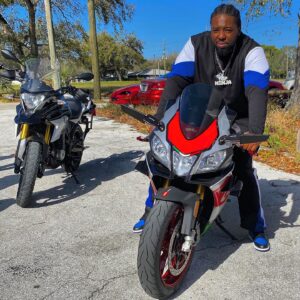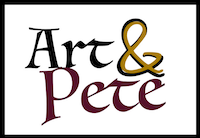
Devin Odell
Music lessons have often been an important part of my life, from the kindly neighbor up the street who taught me piano to the hippie saxophonist in New Haven with a method based on color theory. Until now, all of these lessons have been in person, in the home or studio of my teacher. As we protect ourselves and each other during this pandemic, however, in-person lessons have become impossible.
Fortunately, we live in an age where the ability to take part in video communication — via Zoom, Skype, FaceTime, and other platforms — is now widespread. And just as we turn to this technology to sustain our jobs, businesses, community work and social lives, music teachers and students can use it to continue their lessons until they can meet in-person again.
To find out how these virtual lessons are going, I contacted a few local teachers and students, starting with my own current piano teacher, jazz pianist, composer and teacher Mark Sloniker.
He teaches about 30 students from primary school kids to adults — or, as he says, “children of all ages” — and 15 or so are continuing with video lessons. The main challenge for him has been to figure out how to help students with the physical aspects of playing the piano, such as making sure that they relaxed and not holding tension in their wrists or shoulders. While this is easy to demonstrate and to monitor when sitting next to somebody, it is more difficult when observing a “three-dimensional person on a two-dimensional screen,” as he puts it.
On the positive side, Sloniker says that students often feel more comfortable playing their own pianos in their own homes, as opposed to having to adjust to his piano and studio.
From my perspective, I miss the chance to play together, improvising on a tune. These jams are usually my favorite part of the lesson and central to learning jazz.
Ethan Sherman, a senior at Fossil Ridge and a classical pianist, is very experienced with video lessons because he had been taking them before the pandemic with Marija Stroke, a teacher and performer in New York who often comes to Fort Collins as perform at Off the Hook Arts’ Summerfest events.
Sherman says that video is “always inferior,” because of the sound quality and the limitations on the ability of the student to see exactly what the teacher is demonstrating. Professor of Keyboard Studies at University of Northern Colorado, very valuable. In fact, he has been able to continue to progress and even bring an impressive repertoire to performance level.
Heidi Mausbach, a local cello performer and teacher, continues with video lessons for almost all of her 15 students. She agrees that the sound quality is a major drawback and feels that it does not allow her to hear the nuances of a student’s playing, something particularly important for more advanced students. But she finds the ability to observe a students’ hands up close very helpful.
And the video lessons have also led her to take notes during each lesson and email them to students, something she believes reinforces the value of the lesson. She also notes that many students seem to be taking advantage of the disruption in their regular schedules to practice more regularly.
This was seconded by Juliet Koenig, a 12-year-old violin student, who takes lessons from Jephta Bernstein, a violinist and the founder and executive director of Off the Hook Arts. She says that the video lessons work well for her and that she continues to make good progress. In fact, she hopes that all the hard work she’s been able to do while forced to spend time at home might pay off and she will “come out of it better” and maybe even advance past other students who haven’t been as diligent.
Michael Davis, a violin teacher with a wide range of mostly advanced students, offers several tips for good video lessons. First, he says, a good internet connection is key to minimize disruptions and lag.
Second, he and others I spoke with recommend investing in a good external microphone rather than relying on a device’s built-in microphone. Sound quality for music lessons can also be improved, at least on Zoom, by adjusting the settings to “original sound.” Sherman suggested this tutorial to help learn about this: https://www.youtube.com/watch?v=j2T7PCk_cWs.
Third, Davis suggests that teachers spend a little more time preparing for lessons. For many teachers, this includes buying music to make sure they have all of the same music as their students. In addition, it can be helpful to think through coaching suggestions thoroughly before a student starts to play. This allows the students to play longer without the need to interrupt them, something that can be difficult to do over video.
For more reading, check out the inspiring story of how one piano teacher in Denver, 92-year-old Holocaust survivor Cornelia Vertenstein, has shifted to video lessons and hear some of her students perform at her virtual recital in this New York Times piece: https://www.nytimes.com/2020/05/15/us/virus-piano-lessons.html?searchResultPosition=1.
Scene Magazine Local Offers
Northern Colorado LiveMarket






